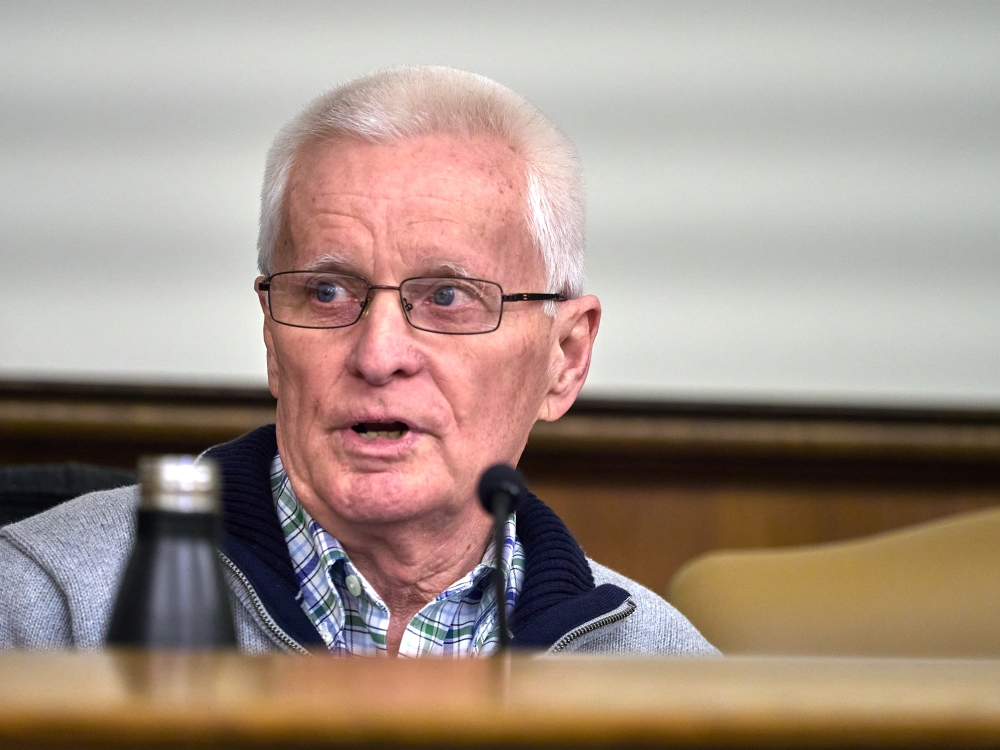A group concerned about the decommissioning of the Pilgrim nuclear power plant has asked the state to prevent Holtec, the company charged with securing the Manomet site, from releasing radioactive water vapor into the air.
The appeal comes as questions about how the decommissioning will proceed remain unanswered. A lot depends on decisions from the state Department of Environmental Protection, the federal government, and executives at Holtec. A statement from the DEP didn’t provide much clarity on what’s next, and when some action might happen.
“MassDEP is reviewing the January 9, 2024, letter, coordinating as appropriate with relevant state and federal authorities, including the Department of Public Health,” said spokesperson Ed Coletta. “We are committed to working with all partners to ensure Holtec’s decommissioning of the Pilgrim facility is protective of the environment and public health.”
The plant, which opened in December 1972 and had a troubled history, shut down in 2019.
The DEP must now decide whether to take action on a letter to commissioner Bonnie Heiple from Diane Turco, executive director of Cape Downwinders, asking for a halt to the release of radioactive water vapor.
How fast water is being evaporated from the plant is in dispute.
At a Jan. 4 forum, Barry Potvin, chair of the Plymouth Board of Health, said 1.1 million gallons of radioactive water must be removed to complete dismantling the reactor. But Patrick O’Brien, a spokesperson for Holtec, said that 1.1-million-gallon figure dates to early 2022. In September, Holtec said that 200,000 gallons of water had already evaporated, leaving 900,000 gallons. The water is in the spent fuel pool and the nuclear reactor itself.
There are four ways to get rid of the radioactive wastewater.
First is to store it onsite for at least 60 years, or five times the half-life of tritium in water, Potvin said.
Second is to ship the water to an offsite processing facility in Texas, which Holtec estimated would cost about $20 million.
Instead, Holtec opted for a third way – discharging the water into Cape Cod Bay after treatment. But on July 24, the state DEP said it would not approve the discharge. The decision was a temporary one, however, and has yet to be made final.
The fourth method is to release the water by evaporation without pretreatment through the stack into the atmosphere. Some evaporation has occurred steadily since the reactor went into operation more than 50 years ago.
“Evaporative discharges have occurred every day since the plant began in 1972,” O’Brien said in an interview with the Independent. Because the pool temperature is lower than when the plant was operating, O’Brien said, there is less evaporation.

At issue now is whether submersible heaters in the wastewater field reactor cavity have raised the water temperature and the evaporation rate.
Between February and June 2023, Holtec installed submersible heaters to raise the water temperature to 90 degrees, according to Potvin, who said that doubled the evaporation rate to 200,000 gallons a year.
“It’s likely under these circumstances, that all the contaminated wastewater would be evaporated to the atmosphere within seven or eight years,” Potvin said.
But there is disagreement over the water temperature.
In an August letter to John Priest, director of the Radiation Control Program at the Massachusetts Department of Health, and to the activist group Cape Downwinders, an anonymous whistleblower said the heaters raised the temperature of the water to 117 degrees.
Holtec told state regulators and the Independent that the whistleblower was wrong – the company insisted that the water temperature was maintained at between 90 and 95 degrees.
In her letter to Heiple, Turco said the immersion heaters were turned back on in November and Holtec resumed discharging radioactive water vapor.
O’Brien said the heaters were brought in because the building must be heated for people to work in it. In addition, he said, as the reactor is disassembled, radioactive materials are packaged underwater for removal, and a higher water temperature assures a quicker drying time.
The heaters were off over the holidays, O’Brien said, but are back on now.
State Rep. Dylan Fernandez, a Falmouth Democrat who attended the Jan. 4 forum, does not buy Holtec’s explanation.
“Holtec is using heaters to increase the evaporation rate of untreated nuclear waste,” Fernandez told the Independent.

The dispute over how to dispose of the water has lengthened the timeline for decommissioning the plant.
David Noyes, senior compliance manager with Holtec, told the state’s Nuclear Decommissioning Citizens Advisory Panel in November that Holtec was pushing completion of the decommissioning to 2035 from 2031. Holtec blamed the delay on deliberations over how to dispose of the wastewater.
At the Jan. 4 forum, Brita Lundberg, of the Massachusetts Medical Society, urged greater independent monitoring of the release of radioactive water vapor from Pilgrim and its potential impact on people who live near the plant before decommissioning is allowed to proceed.
“There’s no threshold for the negative health effects of radiation,” Lundberg said. “Releasing this radioactive waste by aerosol or contaminated waste is a risk to health and safety.”
O’Brien countered that the plant’s license requires it to keep radiation exposure to the public at the boundary line of the property to no more than 3 millirem a year.
“If someone was standing at our property, 24/7/365 for a year, they couldn’t get more than 3 millirem,” O’Brien said.
The Nuclear Regulatory Commission estimates that, on average, people in the U.S. are exposed to 620 millirem a year.
Potvin said that claims that there is a safe level of radiation exposure refer to external exposure and not to exposure within the body from inhaled water vapor.
“Any additional amount of radiation above does have an effect, which increases cancer rates and other illnesses in the population,” he said.
There is disagreement on whether the state has the power to stop the plant from emitting the water vapor. Holtec agreed to two stipulations when it signed a settlement agreement with the state: to comply with all state environmental and health standards, and not to claim that federal law preempts state law.
But O’Brien said that the company still believes that federal law preempts state law. In that case, it would ultimately be up to the NRC and the Environmental Protection Agency to decide whether Holtec can release water into Cape Cod Bay or water vapor into the air.
Fred Thys can be reached at fred@plymouthindependent.org.

